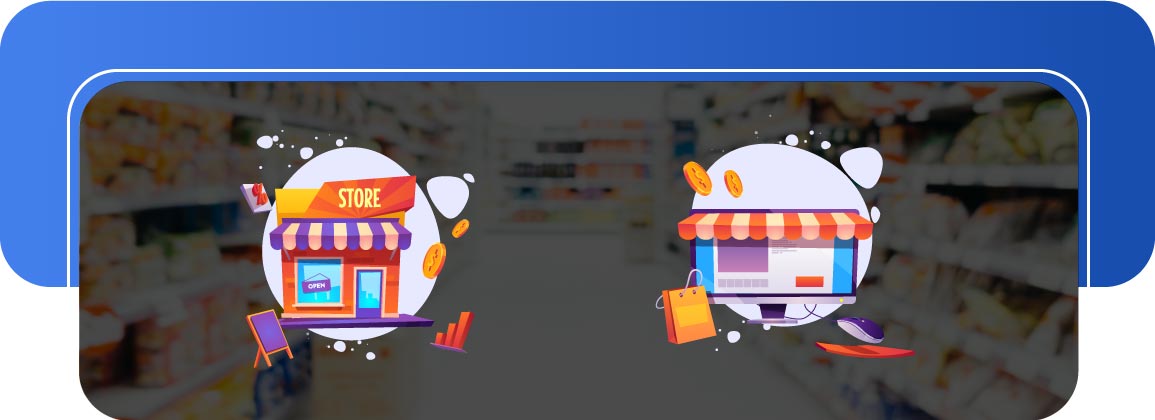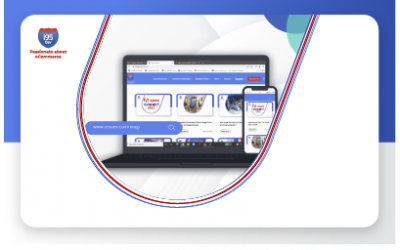As the impact of COVID-19 continues to grow across the globe, leaders are pondering over the effects that it has on their businesses. The stay-at-home regulations and temporary shutdowns imposed on many businesses are driving business leaders to find new ways to reach out to the customers.
As such, the market for fast-moving consumer goods has also been impacted. In heavily affected countries, demand for consumer-packaged-goods (CPG) continues to climb sharply and there has been a significant surge in spending on household goods as well Total U.S. CPG sales increased $8.5 billion during the two weeks ended March 21, 2020, claimed a Nielsen report.
To reduce their chances of catching the virus, people are decreasing the frequency of going to the grocery store. While some are resorting to stockpiling toilet paper (week 1), hair and grooming products (week 4), water and food (throughout the lockdown), others are using eCommerce to purchase their necessities and more. The adjustment in shopping designs has made retailers reconsider their dependence on in-store sales.
Shoppers’ habits are changing fast
An online survey by Brick Meets Click and Symphony RetailAI Online shows that home delivery and store pickup online grocery sales arrived at another 30-day record for April, hitting $5.3 billion and denoting a 37% expansion from $4 billion in March. As indicated by information from Nielsen and Rakuten Intelligence, U.S. online deals of consumer packaged goods (CPG) became 56% in the week ending April 18.
The volume of customers submitting an online basic food item request has increased as well in April. It is surprising to note that 33% of these are first-ever online basic food item purchases made by people. These new shopping behaviors, truth be told, could become the new standard for certain customers. This also presents an extremely convincing open door for retailers to create advanced digital arrangements.
eCommerce to the rescue
In the US, where Amazon remains the go-to eCommerce platform, traditional brick-and-mortar retailers have also looked to capture this opportunity by digitizing their presence online. Walmart, for example, has grown Walmart.com. Target Corp. is adapting in several ways to keep up with the surge in sales of items like food and beverage and health and beauty essentials.
While the traditional offline stores continue to remain open, digital sales are skyrocketing to have grown by 275% since the beginning of April, Target reported.
But is the grass all green or does it come with its own burnt patches?
In grocery and fresh food categories, US eCommerce is still struggling. Retailers are looking for a robust and integrated eCommerce platform that will help them deliver seamless omnichannel experiences across channels.
But all of this comes with its own challenges
Disrupted supply chains
The lockdown has put huge pressure on the supply chain of businesses, especially groceries, fresh foods, and staples. These everyday items, required daily by millions of house-bound citizens, need to be delivered with minimal human-to-human contact. Due to disrupted supply chains and fall in imports, raw materials supplies could be another big challenge for select categories in retail and durables.
Concern among customers to receive online packages
With new developments happening every day with medical research, customers are concerned about their safety and it is changing their shopping behaviours rapidly. They are afraid of accepting their online grocery packages.
Inability to provide seamless customer experience
Even as the surge continues, companies are not being able to manage the increase in orders with their existing infrastructure. The eCommerce platforms are not agile and their business processes are not resilient enough. Even when shoppers will continue to shop online, they expect a seamless experience. As the experience declines, the customers will be quick to move to competitors and alternative options.
…Reports of significant delays in delivery availability and consumer accounts of canceled orders due to too many out of stock items, the reality is that online fulfillment was unprepared for the massive surge in demand.
Source: Nielsen
Adapting to the changes and fighting the challenges
In these different times of social distancing and self-quarantine, grocery delivery and grocery pickup services are seeing a huge jump. In their attempt to avoid large gatherings at grocery stores, customers are choosing BOPIS (buy-online-pick-up-in-store) where consumers can place the order online, pick up the product at a brick-and-mortar store, or at curbside where they can collect the item without going inside the store.
‘BOOTHS” the northern grocery chain has launched next day click and collect service where customers can choose from 150 products to order online and make the payment over the phone.
As more and more Customers will shift towards online buying, services such as home-based delivery, and click and collect services will flourish. It is now up to the retailers on how well they can adjust to the changes and ensure seamless shopping experiences across channels.
Retailers can tap into this surge and sustain it. But how is the question of the hour?
We now stand at a major point in time which will mark as a turning point for consumer behaviour. Going by previous statistics and observations, the growth in online shopping is here to stay. It might have hit its peak but in the decline, it will surely rest much higher than what it was at before. But to bank on that growth and sustain it, retailers will have to ensure seamless and extraordinary customer experiences. This also spans across diligent management of inventory and logistics
At i95Dev, we work with both distributors and retailers to help them strategies for omnichannel sales. We work with them for eCommerce implementations, as well as to enhance their e-stores, unified commerce approach, and customer experience.
Recent Blogs
Enhancing Shipping Precision with Custom Shipping Groups in Adobe Commerce/ Magento
Enhancing Shipping Precision with Custom Shipping Groups in Adobe Commerce/ Magento Author Category Share Three things matter the most when it comes to eCommerce shipping: speed, accuracy,...
Managing Massive Product Catalogs: Why Synchronization is the Key to Efficiency
Managing Massive Product Catalogs: Why Synchronization is the Key to Efficiency Author Category Share The automotive aftermarket industry is vast and highly competitive, requiring businesses...
A Complete Guide to Seamlessly Integrating Adobe Commerce with NetSuite
A Complete Guide to Seamlessly Integrating Adobe Commerce with NetSuite Author Category Share Integrating Adobe Commerce (formerly Magento) with NetSuite ERP can transform the way businesses...




